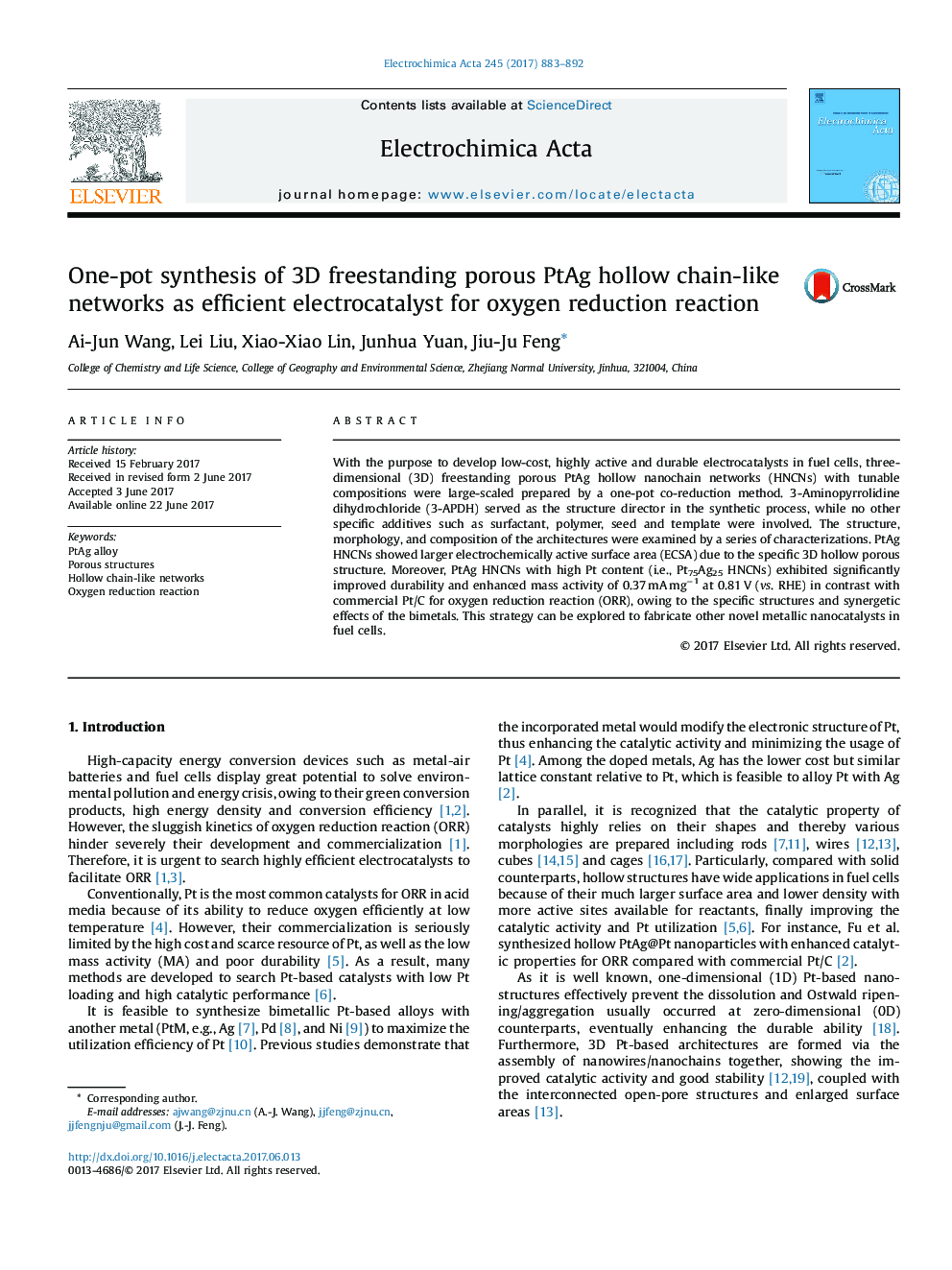| Article ID | Journal | Published Year | Pages | File Type |
|---|---|---|---|---|
| 6470901 | Electrochimica Acta | 2017 | 10 Pages |
â¢3D porous PtAg HNCNs were prepared by a one-pot co-reduction aqueous method.â¢3-APDH acted as a structure-director in the current synthesis.â¢The hierarchical architectures showed significantly enlarged ECSA.â¢The frameworks showed effective catalytic activity and high durability for ORR.
With the purpose to develop low-cost, highly active and durable electrocatalysts in fuel cells, three-dimensional (3D) freestanding porous PtAg hollow nanochain networks (HNCNs) with tunable compositions were large-scaled prepared by a one-pot co-reduction method. 3-Aminopyrrolidine dihydrochloride (3-APDH) served as the structure director in the synthetic process, while no other specific additives such as surfactant, polymer, seed and template were involved. The structure, morphology, and composition of the architectures were examined by a series of characterizations. PtAg HNCNs showed larger electrochemically active surface area (ECSA) due to the specific 3D hollow porous structure. Moreover, PtAg HNCNs with high Pt content (i.e., Pt75Ag25 HNCNs) exhibited significantly improved durability and enhanced mass activity of 0.37Â mAÂ mgâ1 at 0.81Â V (vs. RHE) in contrast with commercial Pt/C for oxygen reduction reaction (ORR), owing to the specific structures and synergetic effects of the bimetals. This strategy can be explored to fabricate other novel metallic nanocatalysts in fuel cells.
Graphical abstractDownload high-res image (190KB)Download full-size image
